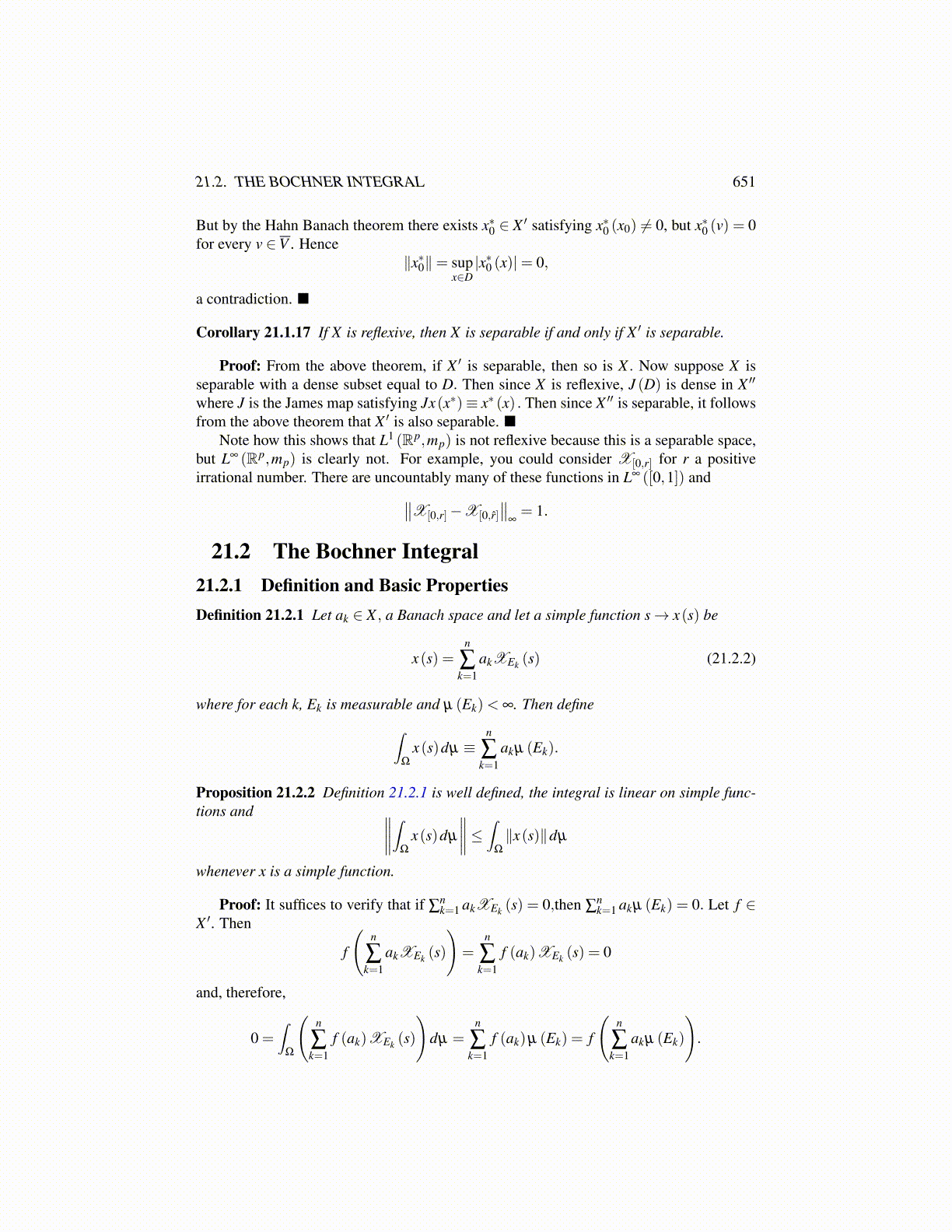
21.2. THE BOCHNER INTEGRAL 651
But by the Hahn Banach theorem there exists x∗0 ∈ X ′ satisfying x∗0 (x0) ̸= 0, but x∗0 (v) = 0for every v ∈V . Hence
∥x∗0∥= supx∈D|x∗0 (x)|= 0,
a contradiction.
Corollary 21.1.17 If X is reflexive, then X is separable if and only if X ′ is separable.
Proof: From the above theorem, if X ′ is separable, then so is X . Now suppose X isseparable with a dense subset equal to D. Then since X is reflexive, J (D) is dense in X ′′
where J is the James map satisfying Jx(x∗)≡ x∗ (x) . Then since X ′′ is separable, it followsfrom the above theorem that X ′ is also separable.
Note how this shows that L1 (Rp,mp) is not reflexive because this is a separable space,but L∞ (Rp,mp) is clearly not. For example, you could consider X[0,r] for r a positiveirrational number. There are uncountably many of these functions in L∞ ([0,1]) and∥∥X[0,r]−X[0,r̂]
∥∥∞= 1.
21.2 The Bochner Integral21.2.1 Definition and Basic PropertiesDefinition 21.2.1 Let ak ∈ X , a Banach space and let a simple function s→ x(s) be
x(s) =n
∑k=1
akXEk (s) (21.2.2)
where for each k, Ek is measurable and µ (Ek)< ∞. Then define∫Ω
x(s)dµ ≡n
∑k=1
akµ (Ek).
Proposition 21.2.2 Definition 21.2.1 is well defined, the integral is linear on simple func-tions and ∥∥∥∥∫
Ω
x(s)dµ
∥∥∥∥≤ ∫Ω
∥x(s)∥dµ
whenever x is a simple function.
Proof: It suffices to verify that if ∑nk=1 akXEk (s) = 0,then ∑
nk=1 akµ (Ek) = 0. Let f ∈
X ′. Then
f
(n
∑k=1
akXEk (s)
)=
n
∑k=1
f (ak)XEk (s) = 0
and, therefore,
0 =∫
Ω
(n
∑k=1
f (ak)XEk (s)
)dµ =
n
∑k=1
f (ak)µ (Ek) = f
(n
∑k=1
akµ (Ek)
).